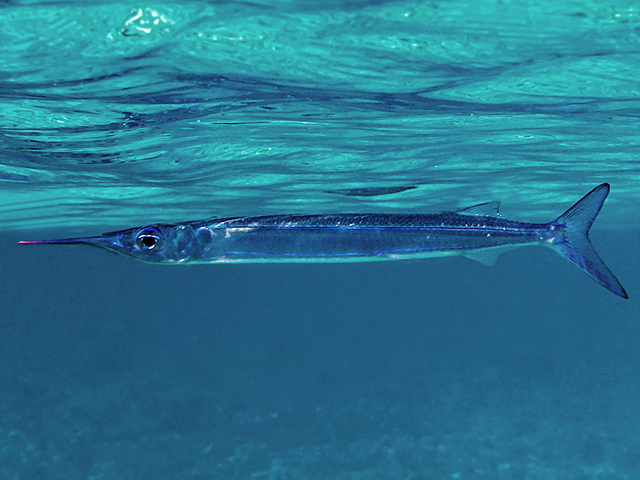| Hemiramphidae (Halfbeaks) |
| 38 cm SL (male/unsexed) |
|
reef-associated; marine; depth range 0 - 6 m |
| Indo-Pacific: Seychelles (Ref. 2334) through the East Indies, Borneo, Philippines, and New Guinea north to Hong Kong and Okinawa and eastward as far as Tuamoto Islands. |
|
Dorsal spines (total): 0-0; Dorsal soft rays (total): 14-16; Anal spines: 0-0; Anal soft rays: 14-16; Vertebrae: 56-60. Prolonged, beak-like lower jaw, contained in 4.2-5.9 times in SL and 0.95-1.4 times in head length; upper jaw short, triangular, and scaly, its width 0.6-0.9 times in its length; length of preorbital bone contained in 1.7-2.2 times in diameter of orbit and 1.0-1.4 times in length of upper jaw. Total number of gill rakers on first arch 33-47; dorsal and anal fin rays 14-16. Caudal fin forked, with lower lobe longer than upper (Ref. 9843).
Description: Characterized by greenish color dorsally and silvery white ventrally with red fleshy tip on lower jaw; depth of body about 6.7 in SL; well developed anterior lobe of dorsal fin; body width contained 1.1-1.3 in its depth (Ref. 90102). |
| Most common around islands and coral reefs (Ref. 6041). Found in schools at surface of lagoon and seaward reefs (Ref. 9710, 48635). Marketed fresh and dried salted (Ref. 9843). |
|
Not Evaluated (N.E.) Ref. (130435)
|
| harmless |
Source and more info: www.fishbase.org. For personal, classroom, and other internal use only. Not for publication.

